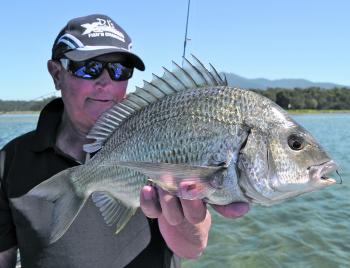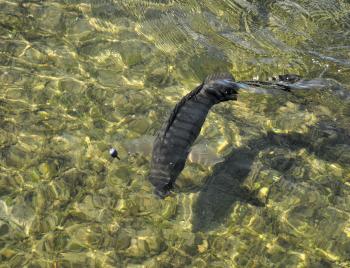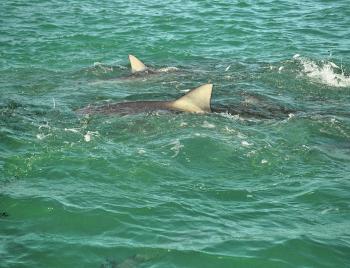When fishing, all anglers want that advantage whether it be finding a new secret lure or fly, a particular way to rig or put a bait on, or some special place that no one knows you visit, but where you always seem to come back with fish.
For me it is the height factor, whether you are on a fly bridge of a game boat, a rock out crop overlooking a trout stream, on some sand dunes staring at a beach or manmade structure like bridges, jetties or wharves, using the height advantage will make for easier angling. One such place at this time of year is the bridge across the Bermagui River where you can do so, and this can be done both at night or in daylight hours.
What I have observed here on the start of a rising tide is fish species in the form of blackfish, bream, trevally, whiting and a few others, congregating on the eastern side of the bridge. They hold on this area for an hour or two, where a well-placed nipper or worm will eventually be seized upon.
In this period of time it can be quite easy to rack up a reasonable one-day cricket score before these fish disperse up the river to feed over the flats where the fishing becomes more difficult. You can also be assured the next day this pattern will continue lasting for about a month.
Not only will you catch fish here in daylight, but you will have similar results of a night under the lights on the same rising tide. Check out any of the other estuaries that are open to the ocean, as simular events can be seen in them as well.
Offshore, not a lot is happening on the game scene and I don’t expect so for another month or two when the cooler 15-16°C water temperatures are replaced by 19-20°C, bringing with it an early run of yellowfin, striped and albacore tuna, with also a hope of a stray striped marlin.
So while game fish might not be on the go, the offshore reefs definitely are. Snapper are being targeted heavily, with fish being taken from the close inshore reefs through to the deep ones just inside the Continental Shelf.
These snapper are now being captured in a variety of ways on the shallow reefs. Soft plastics are popular either on the drift or used at anchor in conjunction with berley. This covers both options for if the fish are not responding to the plastics and you resort to bait.
Wider out towards the Shelf, drifting is your only option where bigger baits attract bigger fish. These species may include Tassie trumpeter, hapuka, large tiger flathead and plenty of morwong both blue and jackass. At this time of year, those tiger flathead start to show in vast numbers where they can be captured from as close as 20m water depth, right out to the Continental Shelf were the larger ones usually lurk. They are a popular table fish much sought-after by anglers and this should be the start of the run of these fish, which will last for some months to come.
Beaches are a little slow until you strike a patch of passing salmon, where things can often get a bit rushed for a while as you try to make the most out of the school before they pass. As mentioned earlier, vantage points on adjacent headlands may allow you to sight these passing schools thus giving you an indication as to which beaches the fish are frequenting.
There have been some nice gummy sharks taken in the deeper gutters with the odd mulloway, while bream and mullet are starting to show more regularly.
In the sweet water of Brogo Dam, the river below the dam and the upper reaches of the Bega River, bass are starting to move about, particularly in the rivers after spawning looking to regain the condition lost while doing so. Warmer days may find these fish on the chew although its early days and the fishing will only become better as the weather warms.
Reads: 2017
One of several bream taken over sand flats in Wallaga Lake. These fish were located by standing on the bow of the boat taking advantage of the height offered.

Looking down on a luderick, which was sight fished by standing up high on man-made structure.

You get to see some spectacular sights while on the water, so take advantage of this great weather.




